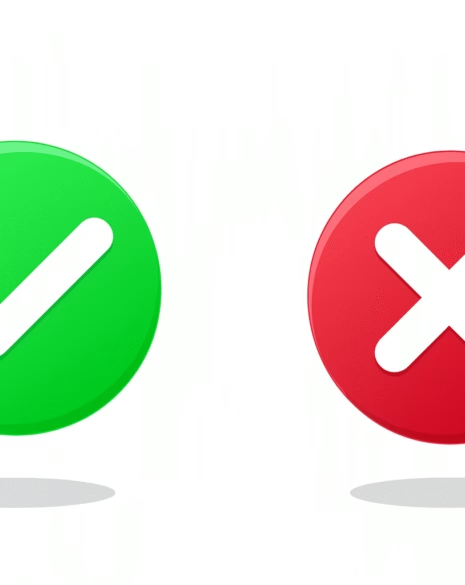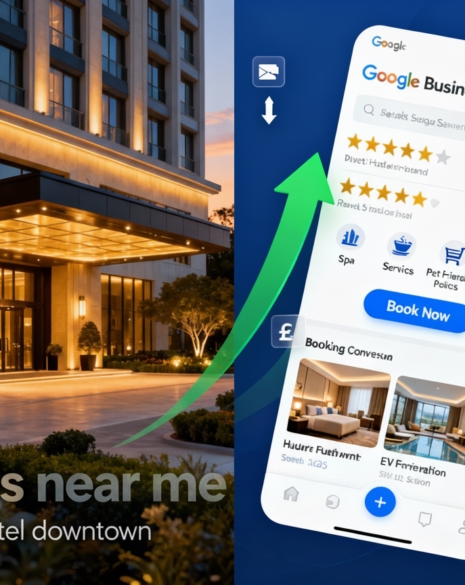If you’re investing in SEO for your hotel website, you’ve probably thought about keywords, page speed, mobile UX, and your Google Business Profile. But there’s one tactic that often gets overlooked — and it’s one of the most powerful tools you have: internal linking.
Done well, internal links improve your rankings, strengthen your topical relevance, and guide users along the booking journey. Done poorly — or worse, ignored — they leave your content isolated, your authority diluted, and your guests bouncing off the site before they reach the checkout.
In this article, we’ll break down what a strong internal linking strategy looks like for hotels, and how to use it to boost both your visibility and your conversions.
Why Internal Linking Is Essential for Hotel SEO
At its core, internal linking is about helping Google and your guests understand how your site is structured. When you link one page to another — say, from a blog post about romantic weekends to your ‘Offers’ page — you’re signalling that there’s a relationship between those topics.
This helps search engines understand your site’s content hierarchy. It shows them which pages are the most important. And it distributes link equity (also known as PageRank) across your domain, giving a lift to those pages that matter most for bookings.
But it’s not just about rankings. Internal links also guide real people. They help guests move naturally through your site — from browsing inspiration to evaluating rooms, then on to booking. A well-placed link, in the right context, can quietly but powerfully shape a user’s journey.
What Strategic Internal Linking Looks Like on a Hotel Website
Think of your website like a hotel concierge. Its job is to help guests get where they need to go — whether that’s learning about the local area, understanding your amenities, or finding the best available rate.
Your homepage should serve as the central hub, linking out to location pages, room pages, and key offers. From there, you build out topic clusters: groups of content connected by theme and intent.
Let’s say you’re targeting couples looking for romantic breaks. You might have a landing page dedicated to romantic stays, supported by blog posts on topics like “Things to Do for Two in Bath,” “Our Favourite Romantic Restaurants,” or “Planning the Perfect Anniversary Getaway.” Each blog should link back to the central romantic breaks page, and ideally to one another where relevant.
This kind of internal linking structure supports both users and search engines. It creates semantic relationships between pages — an approach known as topic clustering — and it helps establish your site’s authority on that specific subject.
How to Build Topic Authority with Internal Links
Start by identifying your key commercial priorities. What packages, services, or room types are you trying to rank and sell? Build clusters around those.
Each cluster should have one core landing page — a page designed to convert. Around that, you create supporting content: blogs, FAQs, and guides that answer common questions, provide local insight, or overcome objections. Every piece of content should link back to the landing page using natural, descriptive anchor text.
For example, don’t just say “click here.” Instead, say “discover our romantic weekend packages” or “view our pet-friendly rooms.” That kind of anchor not only helps with SEO — it reassures readers that they’re being taken somewhere relevant.

As you build more content, look for opportunities to link between supporting pieces too. That strengthens the internal network and increases your time-on-site, which is another positive signal for both UX and SEO.
Common Internal Linking Mistakes (and How to Avoid Them)
One of the biggest mistakes we see on hotel websites is under-linking. A blog post is published with no links to core pages, no links to other posts, and no pathway forward. It becomes an orphan — and orphans don’t rank.
Another issue is overuse of generic anchor text. It’s tempting to use phrases like “read more” or “learn more,” but they don’t communicate value to search engines. Contextual, keyword-rich anchors are better — as long as they’re written for humans, not just crawlers.
Finally, be cautious about going overboard. Stuffing every post with internal links can feel unnatural and overwhelming. Aim for relevance, not volume.
Monitoring and Maintaining Your Internal Linking Structure
As your site grows, so does the complexity of your internal links. That’s why regular audits are essential. Tools like Screaming Frog and Sitebulb can crawl your site and show which pages are heavily linked — and which are isolated.
You can also use Google Search Console to see how Google is crawling your site, and which pages are receiving internal links. Look for pages that are important to your business but rarely linked to — these are often hidden opportunities.
For more in-depth SEO recommendations on internal linking, we recommend resources like https://moz.com/learn/seo/internal-link and Google’s own best practices here: https://developers.google.com/search/docs/crawling-indexing/links-crawlable
Final Thoughts
Internal linking isn’t glamorous. It’s not a headline-grabbing tactic. But for hotels, it’s one of the most impactful levers you can pull.
It strengthens your topic authority. It improves your rankings. And it helps turn casual browsers into paying guests — simply by guiding them toward the information and experiences they’re already looking for.
If your content isn’t supporting your bookings, it may not be what you’re saying — it may be where you’re pointing. That’s where internal linking comes in.
At Formula, we help hotels design and optimise internal link strategies that actually deliver results — not just rankings. Want to know where your site stands? Get in touch.






